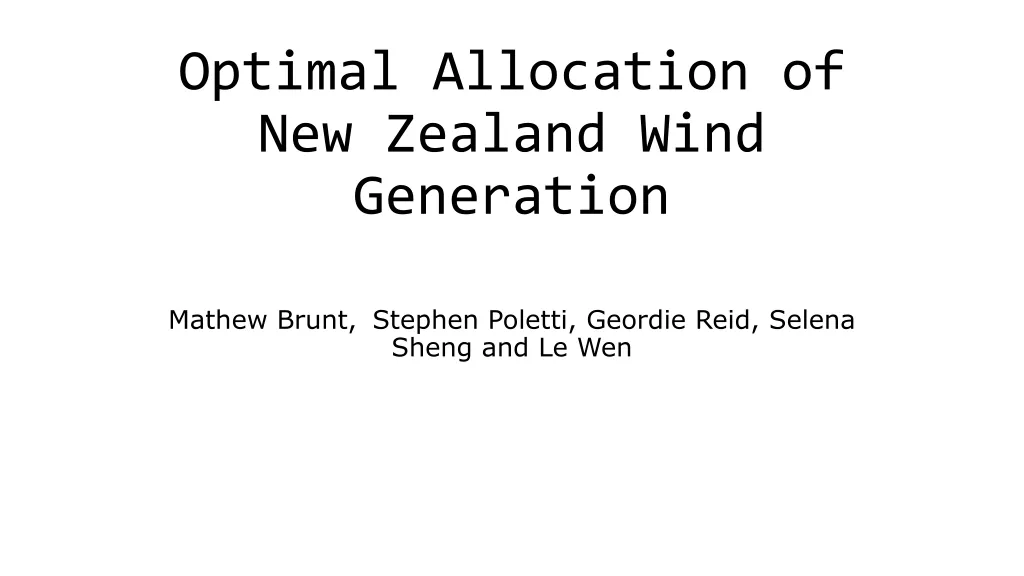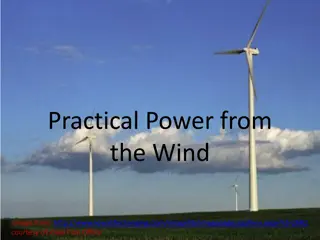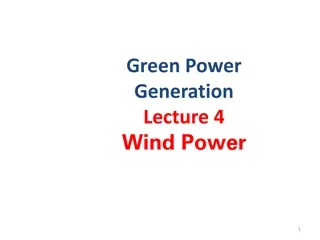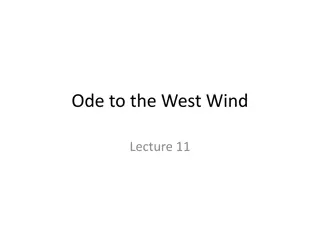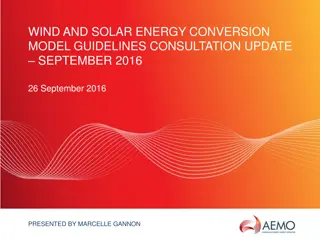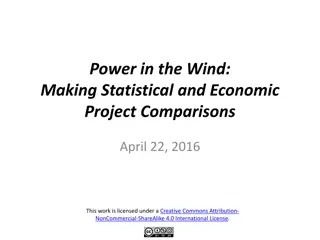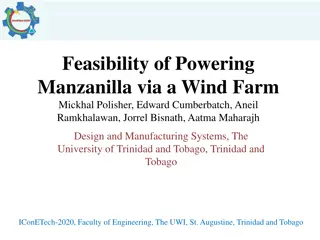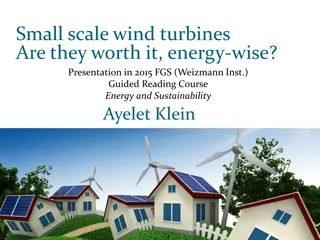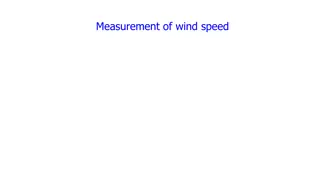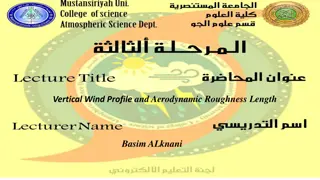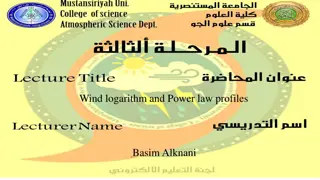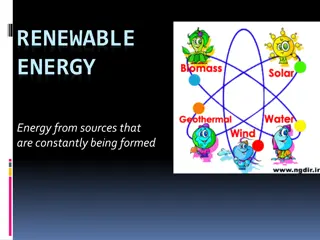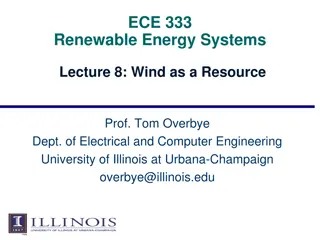Understanding Wind Power Generation Principles
Exploring the fundamental concepts of wind power generation, this content discusses the relationship between kinetic energy, air mass, and wind energy. It delves into the calculation of wind power using air density, velocity, and swept area, providing insights into how wind power efficiency varies with factors like altitude and temperature. Additionally, it highlights the methodologies employed by industry giants like Clipper Wind and Acciona Energy to determine swept areas for wind turbines.
Download Presentation

Please find below an Image/Link to download the presentation.
The content on the website is provided AS IS for your information and personal use only. It may not be sold, licensed, or shared on other websites without obtaining consent from the author. Download presentation by click this link. If you encounter any issues during the download, it is possible that the publisher has removed the file from their server.
E N D
Presentation Transcript
Theoretical Power from the Wind image from http://www.iowalifechanging.com/imagelib/imagepages/gallery.aspx?id=26#3 courtesy of Iowa Film Office
Kinetic Energy KE= mv2 where m = mass & v = velocity
Airs Mass m = Avt where = air density A = area through which air passes v = velocity & t= time
Wind Energy substituting m = Avt into KE= mv2 results in KE = Avtv2 or wind energy = Atv3
Power Energy = Power * time Power = Energy/time wind energy = Atv3 wind power = Av3
wind power = Av3 wind power is directly proportional to the swept area wind power is directly proportional to air density. wind power is directly proportional to v3, air velocity cubed.
Clipper Wind: wind power swept area Swept area = r2 or (d/2)2 where d is the diameter The blade length or radius of the Clipper Wind Liberty 2.5 MW Wind Turbine (C100) is 48.8 meters and a rotor diameter of 100meters The swept area = (d/2)2 = (100meters/2)2 = 7854m2 (industry uses this method) however, With blade length only swept area = (r/2)2 = (48.7m/2)2 = 7,451m2 source http://www.clipperwind.com/pdf/liberty_brochure.pdf
Acciona Energy: wind power swept area swept area = r2 or (d/2)2 where d is the diameter The blade length or radius of the AW- 82/1500 Wind Turbine is 40.3 meters and the diameter is 82m The swept area = (d/2)2 = (82meters/2)2 = 5281m2 (industry uses this method) however, With blade length only swept area = r2 = (40.3m)2 = 5,102 m2 source http://www.acciona-na.com/The-Big-Picture/Air---Wind/Wind-Power/AW1500.aspx
wind power (air density) air density decreases with increases in altitude (for the same wind velocity a turbine is more efficient in Iowa than the mountains) air density decreases with increases in temperature (wind turbines are more efficient in the winter than summer) Try this air density calculator http://www.denysschen.com/catalogue/density.asp
wind power v3 Velocity is the most important contributor to wind power Example: If when v = 5.25 m/s, the wind power is 187.5 kW, then When v = 10.5 m/s, the wind power is 1500 kW This is an 8x increase in power for a 2x increase in velocity


